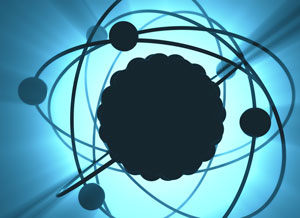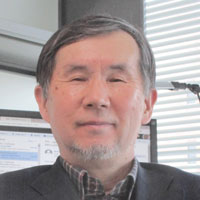Feb. 21, 2020 Research Highlight Physics / Astronomy
Measuring the maximum numbers of neutrons that fluorine and neon nuclei can hold
Fluorine and neon now join eight other elements for which the maximum numbers of neutrons that can be squeezed into their nuclei have been established
 Figure 1: RIKEN researchers have experimentally determined the maximum number of neutrons that nuclei of fluorine and neon can hold. © 2020 KTSDESIGN/ SCIENCE PHOTO LIBRARY
Figure 1: RIKEN researchers have experimentally determined the maximum number of neutrons that nuclei of fluorine and neon can hold. © 2020 KTSDESIGN/ SCIENCE PHOTO LIBRARY
After a two-decade wait, the maximum numbers of neutrons that the elements fluorine and neon can have in their nuclei have been experimentally determined by nuclear physicists at RIKEN1. These data points will be valuable for informing theoretical models of the nucleus.
The current record for the number of people that can squeeze into a Mini car is 27, according to the Guinness Book of Records. Nuclear physicists are attempting to do something similar on a much smaller scale—finding out how many neutrons they can pack into a nucleus of a particular element before it starts leaking neutrons from its seams.
The number of protons in an atom is fixed for each element, but the number of neutrons in a nucleus can vary. About 20 years ago, experimentalists determined that an oxygen nucleus can have up to twice as many neutrons (16) as protons (8). But there has been no progress for elements heavier than oxygen until now.
Toshiyuki Kubo of the RIKEN Nishina Center for Accelerator-Based Science and co-workers have found that the maximum number of neutrons jumps to 22 for fluorine (9 protons)—oxygen’s neighbor in the periodic table. They also went one element further and established that a neon nucleus (10 protons) can hold up to 24 neutrons.
 Toshiyuki Kubo and his colleagues have experimentally determined the neutron dripline for the elements fluorine and neon. © 2020 RIKEN
Toshiyuki Kubo and his colleagues have experimentally determined the neutron dripline for the elements fluorine and neon. © 2020 RIKEN
These findings give new insights into the internal structure of nuclei. “The maximum number of neutrons a nucleus can contain is sensitive to underlying nuclear structure,” explains Kubo. “So the present results provide new keys to understanding the nuclear structure under very neutron-rich conditions.”
The team was able to make this progress because of advances in nuclear-physics facilities. “Previous generations of heavy-ion accelerators and fragment separators lacked the capability to determine the maximum number of neutrons fluorine and neon nuclei can hold,” says Kubo. “The significantly upgraded performance of the new-generation facility we used, the RIKEN Radioactive Isotope Beam Factory, allowed us to do these measurements on fluorine and neon.”
Even with these state-of-the-art facilities, the researchers produced tiny amounts of the neutron-rich elements: about 4,000 nuclei for fluorine and about 100 for neon. “It’s very difficult to produce rare isotopes very far from stable nuclei,” explains Kubo. “Their production rates are so small.”
Kubo notes that there is still a lot more work to be done. “We have determined the maximum number of neutrons up to neon, which has ten protons,” he says. “But the largest known element has 118 protons, so there is a long way to go to see the whole nuclear landscape. Nonetheless, the present results are a significant step toward it.”
Related contents
- Baffled physicists label gamma-ray measurements of super-heavy magnesium “a mystery”
- Measuring an overweight nucleus
- Mythical nuclear beast spotted?
References
- 1. Ahn, D. S., Fukuda, N., Geissel, H., Inabe, N., Iwasa, N., Kubo, T., Kusaka, K., Morrissey, D. J., Murai, D., Nakamura, T. et al. Location of the neutron dripline at fluorine and neon. Physical Review Letters 123, 212501 (2019). doi: 10.1103/PhysRevLett.123.212501
